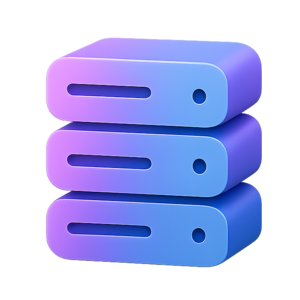The 3-2-1 Backup Rule & Data Backup Strategies
Backing up your data is essential to protect against hardware failure, accidental deletion, ransomware, and disasters. The 3-2-1 backup rule is a widely recommended strategy for ensuring your data is safe.
What is the 3-2-1 Backup Rule?
- 3: Keep at least three copies of your data (the original + two backups).
- 2: Store the copies on two different types of media (e.g., hard drive, NAS, cloud, USB, DVD).
- 1: Keep at least one backup offsite (e.g., cloud storage, another physical location).
Why Follow the 3-2-1 Rule?
- Protects against hardware failure, theft, fire, flood, and other disasters.
- Reduces risk of losing all data due to a single point of failure.
- Ensures you can recover from accidental deletions or ransomware attacks.
Backup Strategies for NAS Users
1. Local Backups
- Use your NAS to back up computers and devices on your network.
- Use built-in NAS apps or third-party tools (e.g., rsync, Time Machine, Windows Backup).
2. NAS-to-NAS or NAS-to-External Drive
- Back up your NAS to another NAS or an external USB drive.
- Many NAS systems support scheduled replication or external drive backups.
3. Offsite & Cloud Backups
- Use cloud backup services (e.g., Backblaze B2, Wasabi, Google Drive, Dropbox) to store encrypted copies of your data.
- For sensitive data, encrypt before uploading to the cloud.
- Alternatively, rotate external drives and store one offsite.
4. Automated Backups
- Schedule regular, automated backups to avoid forgetting.
- Test your backups by restoring files occasionally.
Tips for Reliable Backups
- Automate: Set up scheduled backups so you don’t have to remember.
- Monitor: Enable notifications for failed backups.
- Test Restores: Periodically restore files to ensure your backups work.
- Versioning: Keep multiple versions of files to recover from accidental changes or deletions.
- Encryption: Encrypt backups, especially if stored offsite or in the cloud.
Example Backup Plan for Home NAS
- Store all important files on your NAS.
- Back up NAS to an external USB drive weekly.
- Sync critical folders to a cloud service (encrypted) nightly.
- Test restores every few months.
More Resources
A good backup is your last line of defense. Don’t wait for disaster—start backing up your data today!
